Have you ever wondered why your cat wakes up just when you want to lie down on the sofa?
Many cat owners are often surprised and sometimes even concerned by their pets' seemingly random periods of activity.
Cats are most active at dusk, i.e. early in the morning and late in the evening.
In this blog post, you'll learn more about cat activity patterns, why they are more active at certain times, and how you can better understand and support your cat's behavior.
Are cats more active at night? An overview

Cats are known to become particularly active at dusk . This behavior is not only due to their natural instincts, but also because in nature they would be most likely to encounter their prey at these times. In a household, this can lead to adult cats wanting to release their energy in the evening when things are quieter, so it is not uncommon for cat owners to hear their cats playing at night.
However, the belief that cats are exclusively nocturnal is a myth. Their activity patterns are more crepuscular , meaning they can be active both in the early morning hours and late in the evening. Actual activity can be influenced by several factors, including:
- The breed of the cat
- The age of the cat
- The environment in which the cat lives
It's also important to understand that cats are polyphasic sleepers. They sleep in several short periods spread throughout the day and night, allowing them to use their energy efficiently and respond quickly to environmental stimuli. This sleep pattern may explain why cats appear active at night when in fact they are just going through their normal activity phases.
Play behavior before bedtime: tips for activation

To encourage your cat's natural activity in the evening, it's a good idea to plan interactive games . Games that appeal to the cat's hunting instincts, such as toys that move quickly or offer the opportunity to be hidden, can be particularly engaging. Here are some tips to help activate your cat before bedtime:
- Use toys like laser pointers or feather toys to get your cat's attention.
- Schedule a set playtime each evening so your cat can adjust to it.
However, it is important to time the play correctly. Right after feeding, the cat's energy may be lower, so it is advisable to wait a while before starting to play. Also, make sure to end the game gently so that your cat can calm down before it is time to sleep. This will help ensure a calm transition into the night phases and promote a healthy sleep cycle.
Cat Sleep Patterns: What's Normal?
Cats are fascinating pets, especially when it comes to their sleeping habits. Unlike humans, who usually sleep in one long block at night, cats have a polyphasic sleep pattern. This means they spread several sleep phases throughout the day and night. This behavior is particularly adapted to their natural instincts as predators that hunt at dusk.
During the day, cats experience a mix of light sleep and deeper sleep. During the light sleep, they are still ready to respond to stimuli, which helps them react quickly to potential danger or prey opportunities. Interestingly, cats only spend about four to five hours a day in deep sleep, which is crucial for resting their bodies and minds.
Cats' sleep patterns can also change depending on their living environment and age. Younger and older cats tend to sleep more than adult cats in the prime of their lives. It's important to understand that each cat is individual and their sleep pattern may change accordingly.
Understanding the cat's sleep phases
Cats go through two main types of sleep: light sleep and deep sleep, also known as rapid eye movement (REM) sleep. During light sleep, the cat is relaxed but still alert. Its muscles are relaxed, but it can wake up quickly if necessary.
REM sleep is the phase in which cats dream. This phase is characterized by rapid eye movements behind closed eyelids. During this time, the muscles are completely relaxed and the cat is less easy to wake. This deep sleep phase is essential for the cat's mental health and helps process information and memories.
How long do cats really sleep?
Cats sleep an average of between 12 and 16 hours per day, although this can vary greatly depending on their age, health and activity level. Kittens and older cats tend to sleep more, often up to 20 hours per day, while active adult cats require less sleep.
A cat's need for sleep also depends on the weather. On cloudy or rainy days, cats may spend more time dozing. It is important for cat owners to monitor their pets' sleep to make sure they are getting enough rest without showing signs of illness or stress.
Adjust feeding times: Optimize cat activity
Adjusting your cat's feeding times can have a significant impact on their activity levels. Offering food at times that coincide with your cat's natural activity periods will support their well-being and health. Cats are naturally crepuscular, meaning they are most active at dusk and dawn. Adjusting feeding times to coincide with these times will help your cat better express their natural instincts. Here are some tips on how to adjust feeding times for the best results:
- Feed your cat in the late afternoon or early evening to encourage activity at dusk.
- A small snack or meal early in the morning can help support their dawn activity.
- Avoid late meals, which may make your cat sluggish overnight.
It is also important to consider the amount of food you give at these times. Too much food can lead to lethargy, while too little food can cause restlessness and excessive activity. The quality of the food also plays a crucial role. High-quality food that is rich in nutrients can positively affect your cat's health and energy levels. Make sure the food is adapted to your cat's specific needs, especially when it comes to their age and health. The right balance in the diet can help your cat maintain their natural activity patterns and stay healthy. Here are some points to consider:
- Choose a food that suits your cat's age and health condition.
- Consider any special dietary requirements or restrictions recommended by a veterinarian.
- Monitor your cat's response to feeding times and adjust as needed to optimize her health and activity.
Smartly manage your cat's activity with Flappie

Have you ever thought about how you can better understand and even influence your cat's activity? With the Flappie smart cat flap, you can. This innovative flap is not only an entry and exit option for your cat, but also a smart device that helps you monitor your cat's activity patterns. The flap is equipped with a camera and artificial intelligence that allows it to detect the times when your cat is most active. Here are some key features to help you do this:
- Monitoring entry and exit times : You can see when your cat leaves or enters the house.
- Activity pattern detection : Flappie analyzes the data and helps you understand what times of the day your cat is most active.
- Notifications and alerts : You will receive notifications when unusual activity, such as loot being brought, is detected.
In addition to monitoring, the Flappie cat flap also offers the ability to control your cat's activities. You can set times when your cat is allowed to leave the house or not. This is particularly useful for preventing your cat from going outside at times when they are most likely to bring home prey. The Flappie app allows you to control and adjust these settings conveniently from your smartphone. Here are some benefits of this control feature:
- Selective access control : You can determine when and under what conditions your cat can use the flap.
- Adapt to natural activity patterns : Support your cat's natural habits by adjusting access times accordingly.
- Preventing unwanted behavior : Reduce the risk of your cat bringing home prey by limiting access times around dusk.
With Flappie 's smart cat flap, you have full control and support to ensure your cat's well-being and safety, while developing a deeper understanding of their behavioral patterns.
Frequently Asked Questions
When do cats stop being playful?
Cats are usually most active and playful in the early morning and late evening hours. At night or during the day, especially after feeding, their energy may be lower, and they tend to be calmer and resting.
When are cats at their wildest?
Cats are at their wildest at dusk, early in the morning and late in the evening. During these times, their natural hunting instincts are at their strongest and they display high levels of activity, often perceived as wild play behavior.
When will the cat calm down?
Cats tend to calm down after playing and eating. It is advisable to end the play gently so that the cat can calm down before it is time to sleep. This helps to ensure a calm transition into the night phases and promotes a healthy sleep cycle.
How long do cats sleep at night?
Cats have a polyphasic sleep pattern, sleeping in several short periods throughout the day and night. They only spend about four to five hours a day in deep sleep. The exact length of nighttime sleep can vary, as cats can also be active at night.
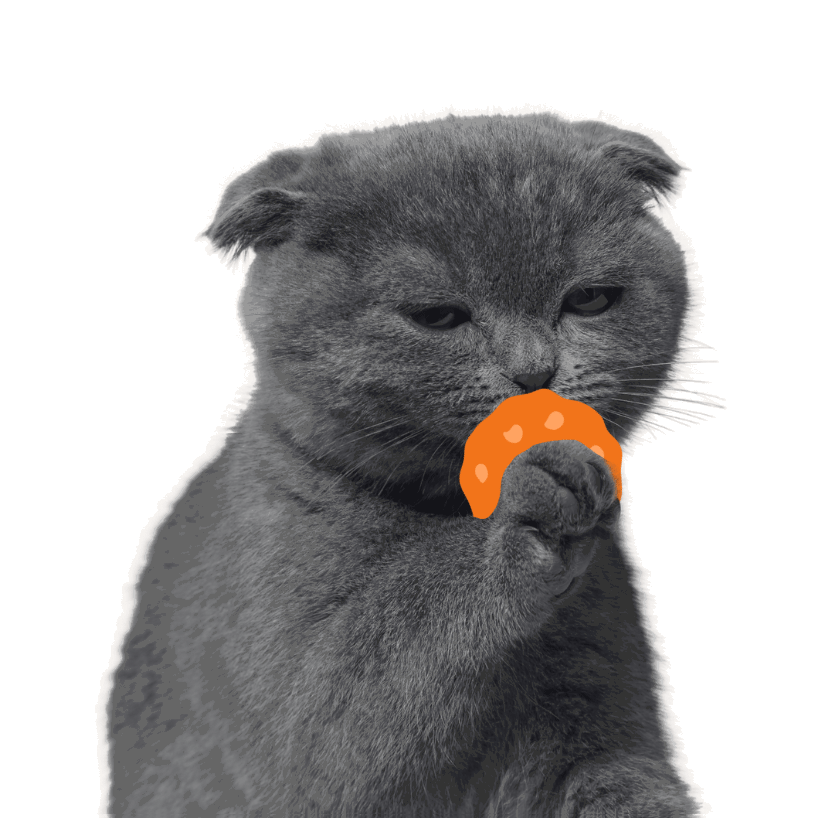
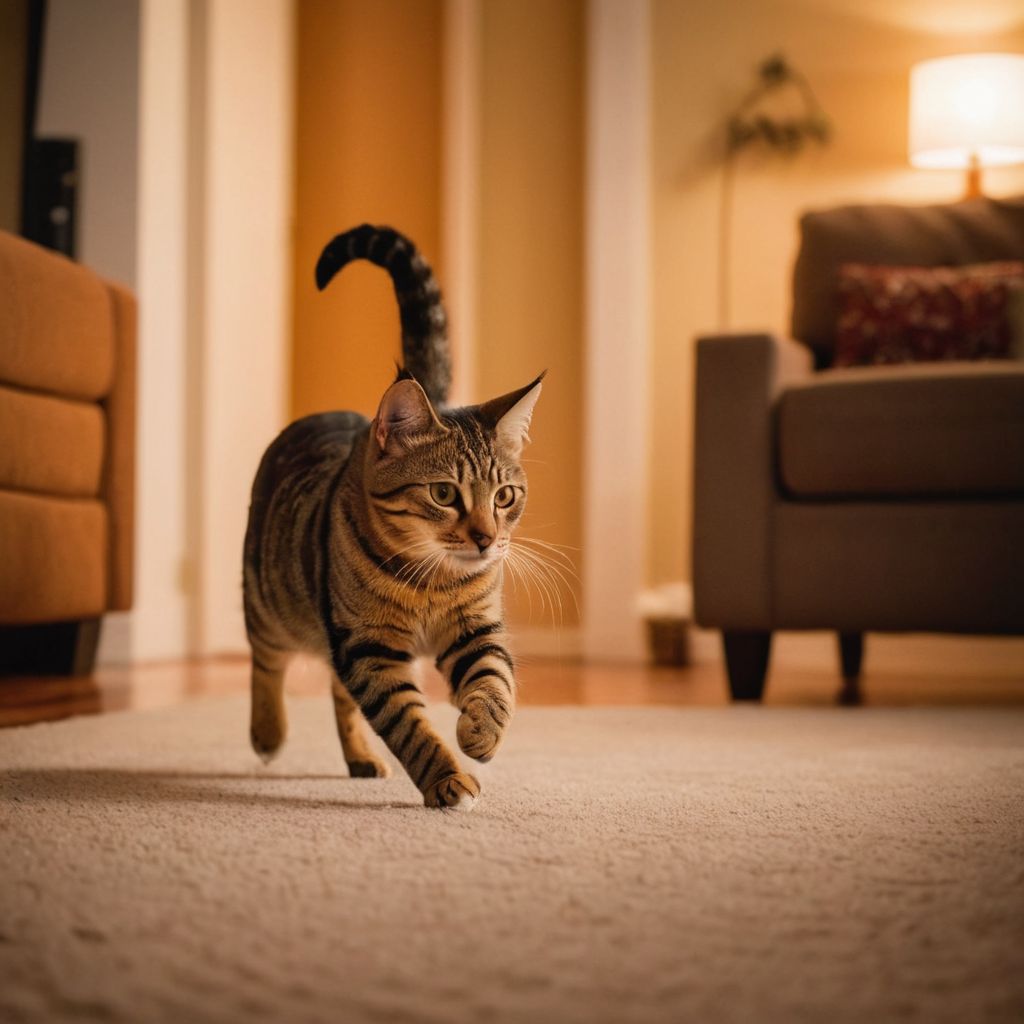
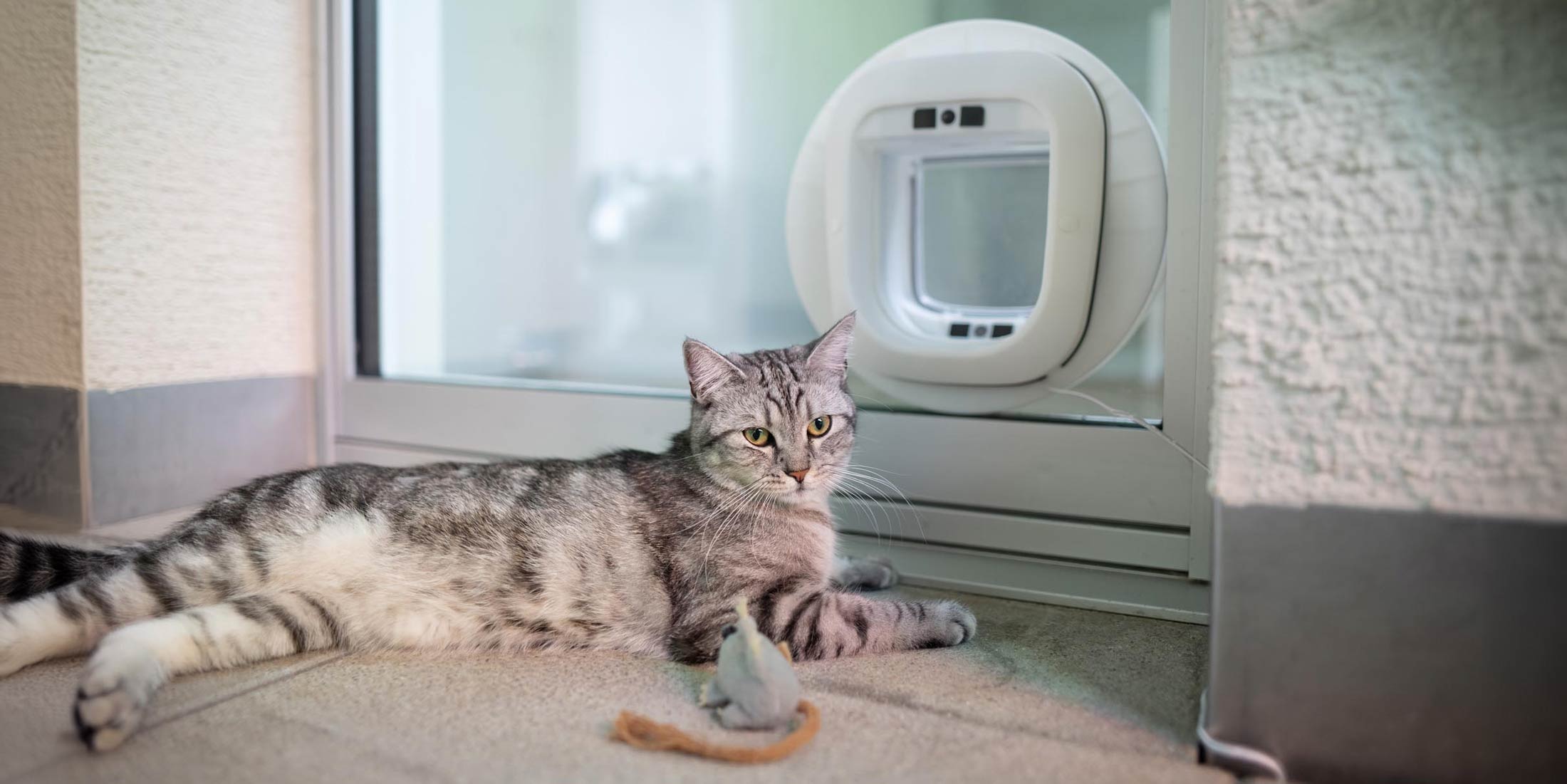
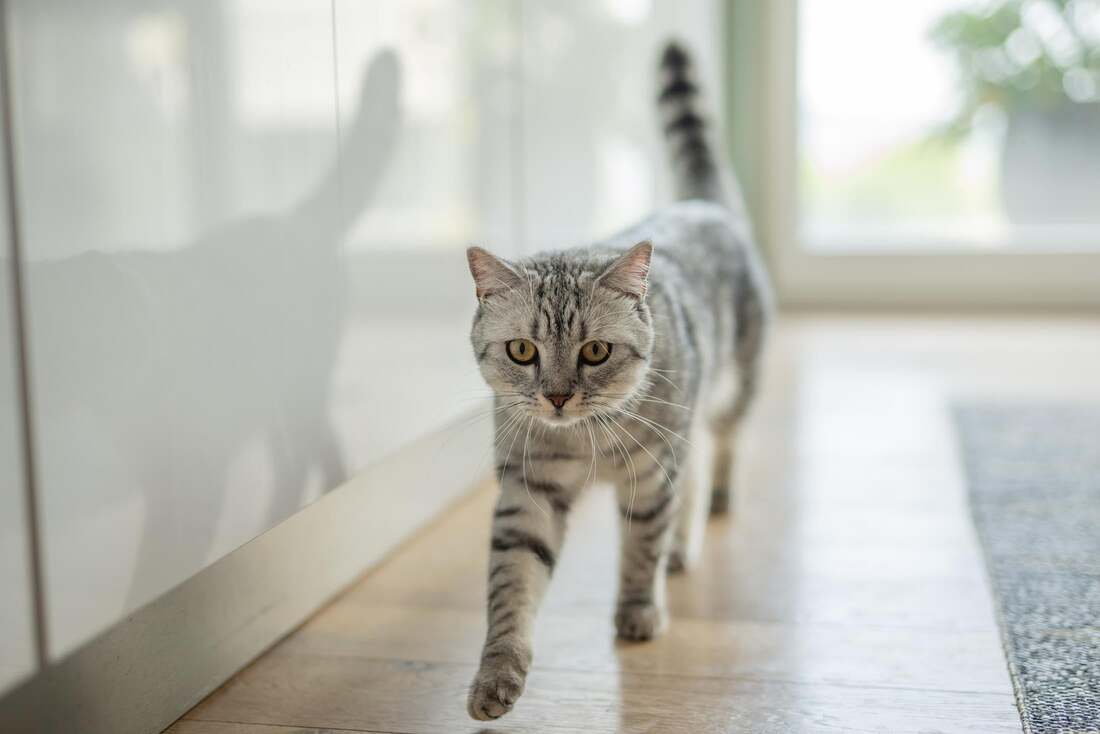
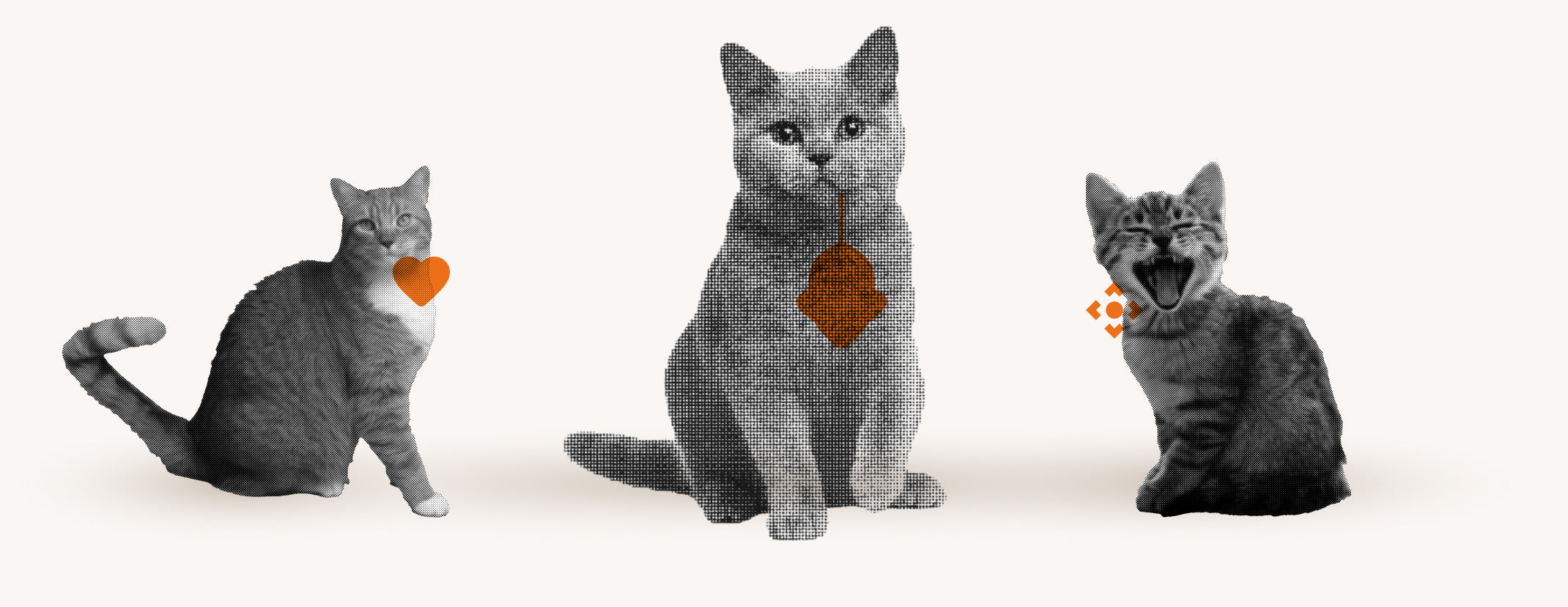
Share:
Predator Hunting Strategies: A Fascinating World
Cat eats mice: Do I need to deworm her now? What you need to know.